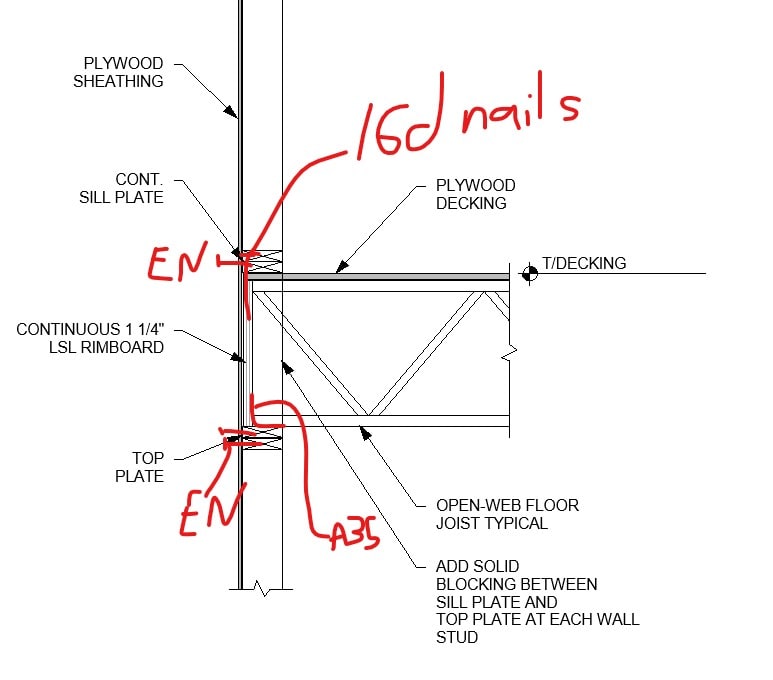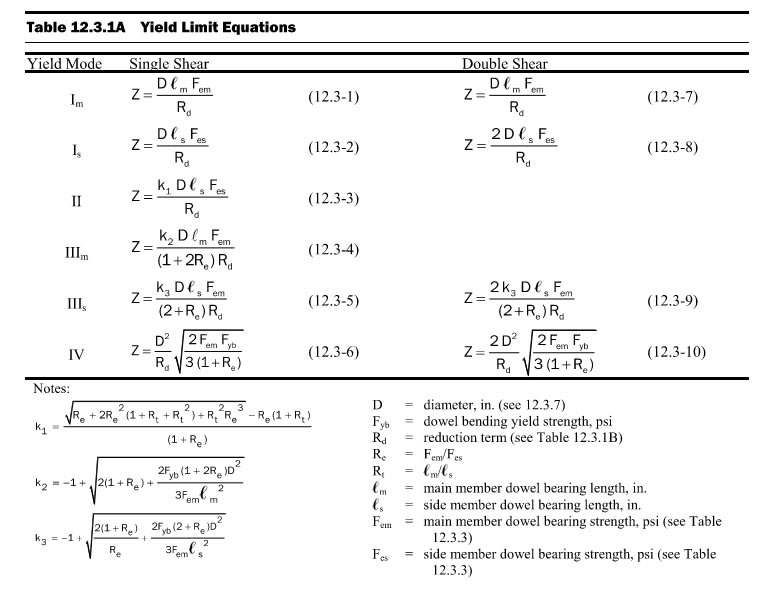GA_Engineer:
A few words of caution… Read that TrusJoist (Weyerhaeuser) pamphlet that Celt83 provided very carefully; every footnote, every table title, every one of their details for the implications of why they show things the way they do. They pack one hell of a lot of info into a pretty small pamphlet, and it all has some meaning in making their product work, or fit within the bldg. codes. Sometimes you have to read a bit btwn. the lines, based on your wood design education (or dig your textbooks out) to understand where they are coming from, or what they really mean. Those TJ Rim Boards were originally designed/manuf’d. to work with their TJI joists, pretty much prescriptively, and their TimberStrand LSL is basically a manufactured commodity product, in many/several widths, thicknesses and lengths which can be used essentially the same way as the rim board.
One thing to watch out for is that each manuf’er. of those materials has their own proprietary mech. properties, and various allowable stresses and other adjusted/equivalent values, etc., which you must live with. Thus, you pretty much have to know which product is going to be used on the job, know your local availability, or the builders purchasing wants. I would also check with the various suppliers floor trusses, rim boards, etc. to see that you have a reasonably good vert. settlement compatibility at the floor framing level. i.e., we know that a 2x10 rim jst. and 2x10 jsts. shrink vert. the same amount at each fl., is that true of your fl. truss and the LSL rim board? You usually don’t want to carry the ext. sheathing mat’l. continuous vert. through this fl. construction height region because there is too much vert. shrinkage/settlement in that couple ft. of ht. You put a spaced horiz. joint btwn. the sheets, which is then nailed off to the rim board (above and below the joint) to transfer diaphragm loads.
You should be able to find some testing and tabulations for nails and screw which are compliant with the IBC; some ICC-ES ESR reports, on nails, screws, plywd. and osb sheathing, etc. Also, some individual supplier/manf’er. literature like the TJ pamphlet abv. The guys who are doing this work every day will have to help you there, my collection of that kind of design material is getting kinda old, as am I. I just don’t collect it every time I see it any longer.



